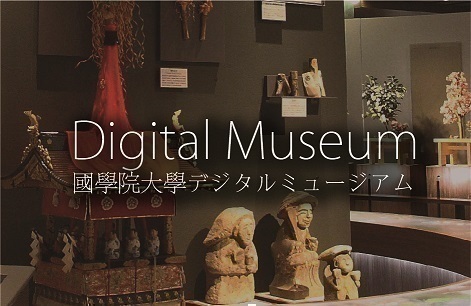- トップ
- Encyclopedia of Shinto
- Jingikandai
Encyclopedia of Shinto
| Main Menu: | |
| Links: |
詳細表示 (Complete Article)
| カテゴリー1: | 3. Institutions and Administrative Practices |
|---|---|
| カテゴリー2: | Medieval and Early Modern |
| Title | Jingikandai |
| Text | The "Agency of the Department of Divinities" (Jingikandai) emerged to carry out a portion of the functions and powers of the archaic Department of Divinities (Jingikan), after these functions underwent a process of reduction and deterioration. Particularly from 1609 onward, the Jingikandai generally refers to the Ceremonial Site (saijōsho) within the Yoshida Shrine (Yoshida jinja) precinct in Kyoto. With the end of the ritsuryō system, the Jingikan (which had formerly been governed by the ritsuryō codes) embarked on a new course as a medieval government agency. However, in contrast with the period when it could rely on state funding, the Jingikan was unable to avoid the deterioration and reduction of ceremonial events and there was difficulty repairing shrine buildings. This hardship is symbolized by the decline of the Jingikan buildings. Among the conflagrations that frequently ravaged the Heian capital, the fire occurring in the 4th month of 1177 especially damaged the Jingikan and is thought to have destroyed the objects of worship of the imperial family's protective deities in the Hall of Eight Deities (Hasshinden). Warfare occurred often in subsequent years; during the Ōnin War (1467-1477), the Jingikan buildings were completely devastated. The very ruins where the Greater Imperial Palace had once stood earned the nickname of "Palace Fields" (Uchino) and, despite frequent plans to repair the buildings, fully-fledged rebuilding proved difficult. One theory suggests that the Jingikan operating from this Uchino might have been the first Jingikandai. Under these circumstances, ceremonial events decreased in scale and became limited to such events as "The First Calligraphy of the Year" (kisshohajime) in the first lunar month and the divination to check the wellbeing of various kami (miurasō). The financial basis of the medieval Jingikan consisted of annual tribute paid by all shrines under its jurisdiction; Matsuo Shrine (presently, Matsuo Taisha) and other shrines are known to have paid this tribute. Land taxes paid by tenant farmers (jishisen) from towns owned by the Jingikan were another important fiscal resource. The Superintendent of the Jingikan (jingihaku) became an appointment from the Shirakawa Hakuō family, whereas the Deputy Commissioner (jikan), Third-level Assistant (santōkan-no-fuku), and Third-Level Secretary (yū) became appointments from the Ōnakatomi, Inbe, and Urabe families. After the destruction of the Hasshinden, the Hakuō family performed the rites associated with the eight deities at its own family residence. The Jingikandai that formed in early modern Japan was intimately tied to the rise Yoshida Shintō. The Urabe clan had split into the Hirano and Yoshida families, the members of which initially paid homage to the Hakuō family as its stewards (keishi). Due to the growing influence of the Yoshida family and the opportunities created by the Hakuō family's internal conflict and the rupture in its hereditary transmission of esoteric knowledge, the Yoshida family gradually took control of the Jingikan's actual authority through such means as issuing certificates conferring rank and titles (sōgen senji). Yoshida Kanetomo, who established Yoshida Shintō in the Muromachi period, called himself the Master of the Jingikan (Jingikanryōchōjō) as the leader of Shintō circles nationwide and assumed a strongly oppositional stance toward the Shirakawa Hakuō family. After founding the Saijōsho, Kanetomo moved it to Mt. Yoshida at Kaguragaoka, then attracted public censure for claiming that the Grand Shrines of Ise (Ise jingū) had relocated to the Saijōsho. In addition, in 1590 during the time of Yoshida Kanemi, official approval was obtained to reinstate the Hasshinden on Mt. Yoshida, and a number of the Jingikan's ritual observances became regularly observed there. With the dispatch of "an imperial envoy (hōheishi) who presents the imperial heihaku offerings" and who exclusively served the Grand Shrines of Ise (Ise jingū) in 1609, and reflecting the wishes of Tokugawa Ieyasu, the Saijōsho began to function as the Jingikandai. This is considered to mark the first instance of the Yoshida "ceremonial site" (saijō) serving as the Jingikandai and, partially because the grounds of the former Jingikan were later subsumed into the site of Nijō Castle, this practice subsequently continued until the Meiji Restoration. In addition, the Hasshinden within the Shirakawa Hakuō family's residence became an agency of the Imperial Household Ministry and continued to function as the saijō for "spirit pacification rituals" (chinkonsai). — Yonei Teruyoshi |




